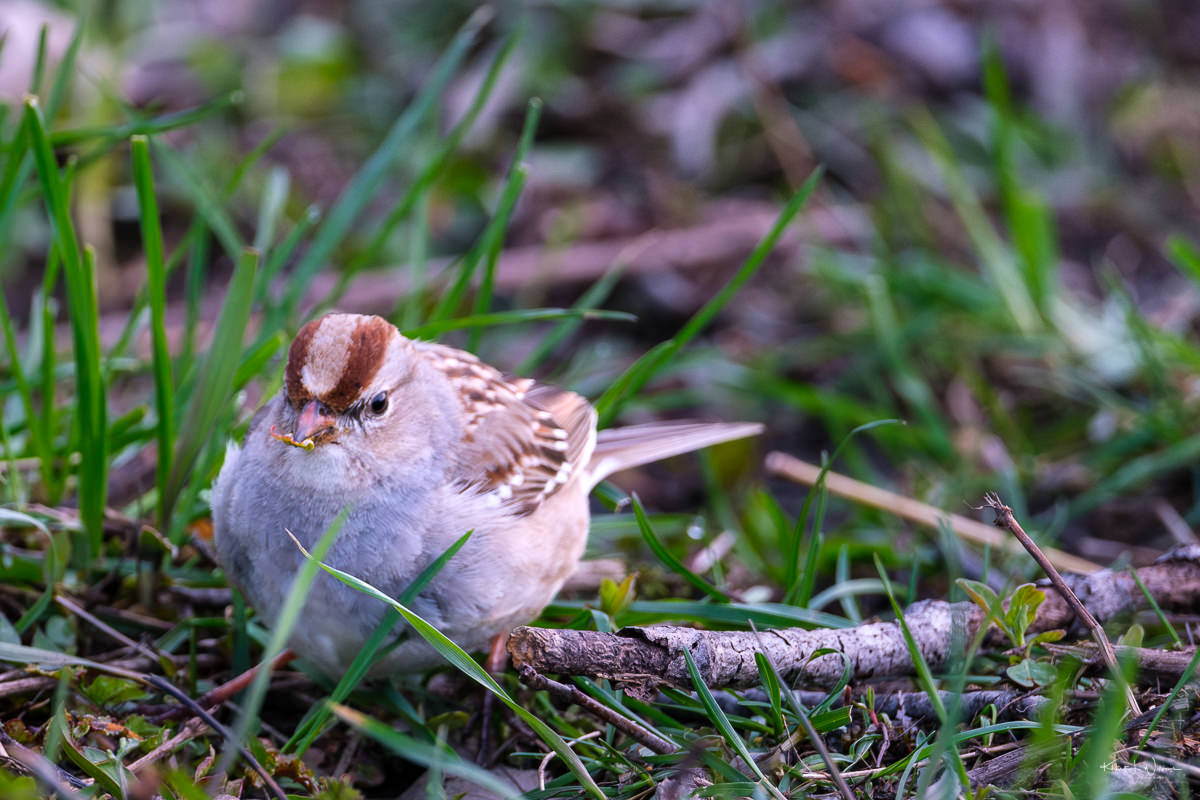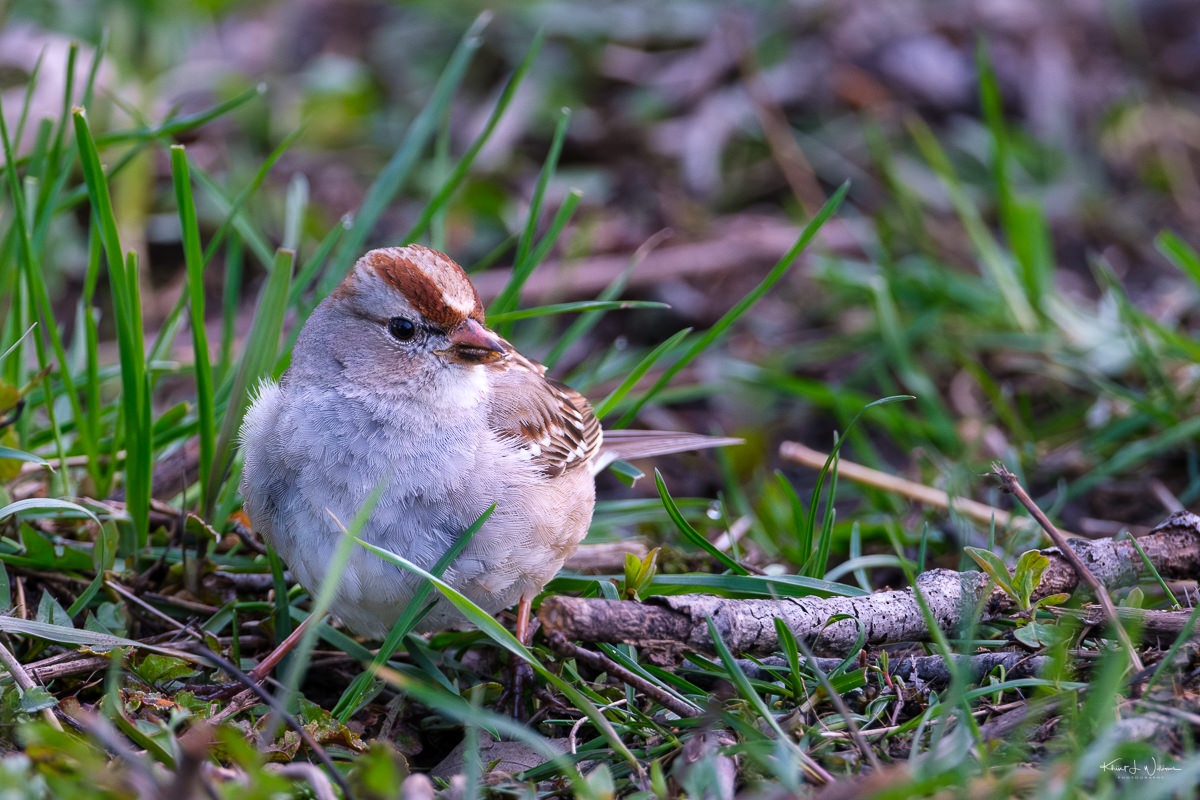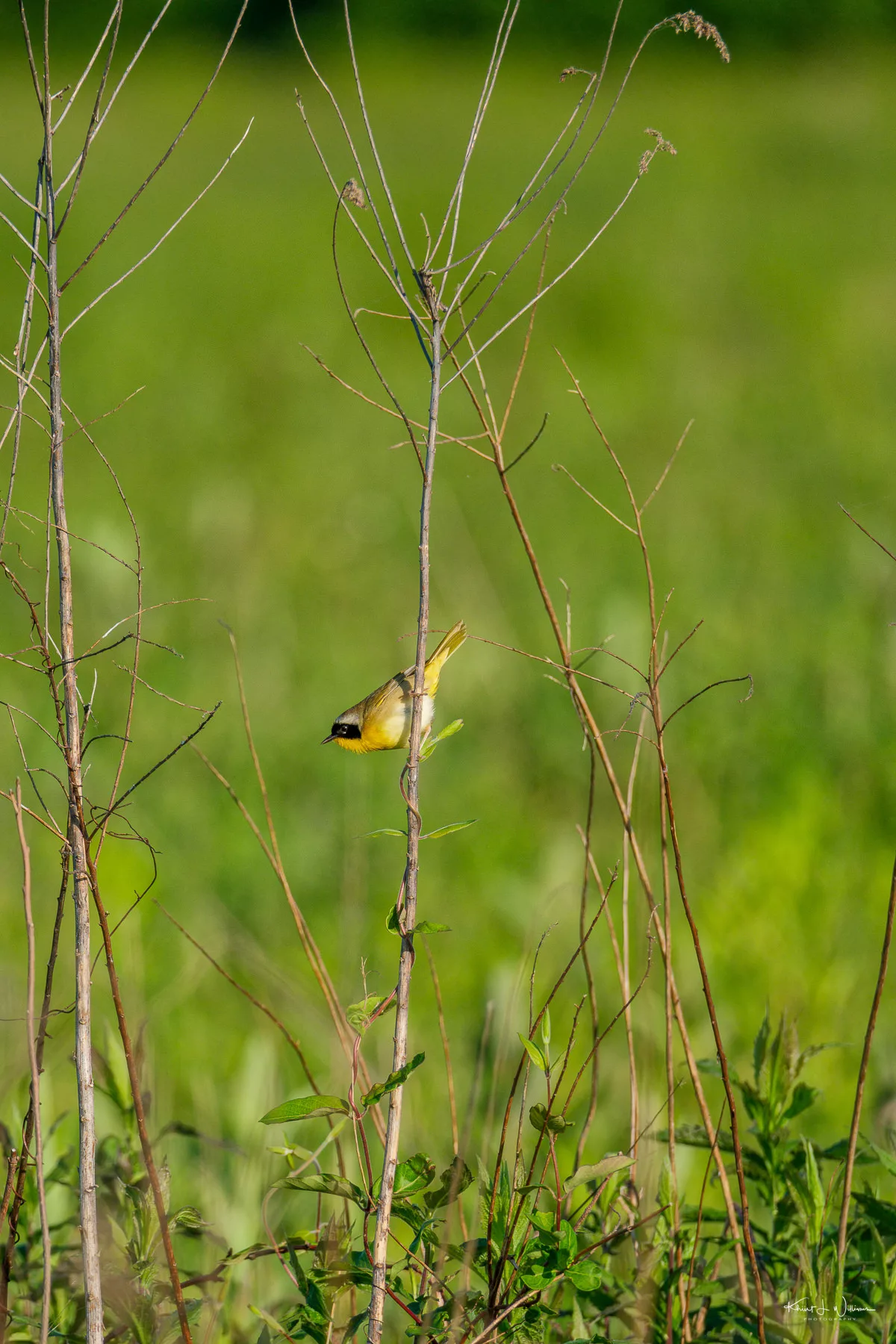One cold windy weekend, I skipped my morning coffee and visited Mercer Meadow at the Reed/Bryan Farm trailhead. I was bundled up but after a few minutes of looking at the European Starlings in the trees at the trailhead, I walked toward the footbridge at the far end.
The Merlin ID app identified several birds nearby which I sighted as well but I was without any photographs are several minutes. The cold started to bite. I had left my gloves in the car. While standing on the footbridge, I noticed movement near my feet.
A Field Sparrow (Spizella pusilla) was pecking at something in the grass. The Field Sparrow has a brownish upper part with streaks and a buff-coloured breast with a white belly. Its wings and tail are marked with rust-coloured feathers.

I don’t know if it was twigs or insects. Field Sparrows primarily feed on seeds, insects, and small fruits, foraging on the ground or low vegetation. I backed up and took a few frames before walking back to the car as fast as I could. I was cold. My fingers were getting numb.

The Field Sparrow (Spizella pusilla) is a small passerine bird found in North America. It belongs to the family Passerellidae and is known for its distinct plumage and vocalisations. They build cup-shaped nests in dense shrubs or grassy areas, often concealed for protection.
During the breeding season, males sing to establish territories and attract mates, with a song characterised by trills and high-pitched notes. Field Sparrows are migratory birds, spending winters in the southern United States and migrating north to breed in spring and summer. They are commonly found in open grasslands, agricultural fields, and brushy areas across their range.



